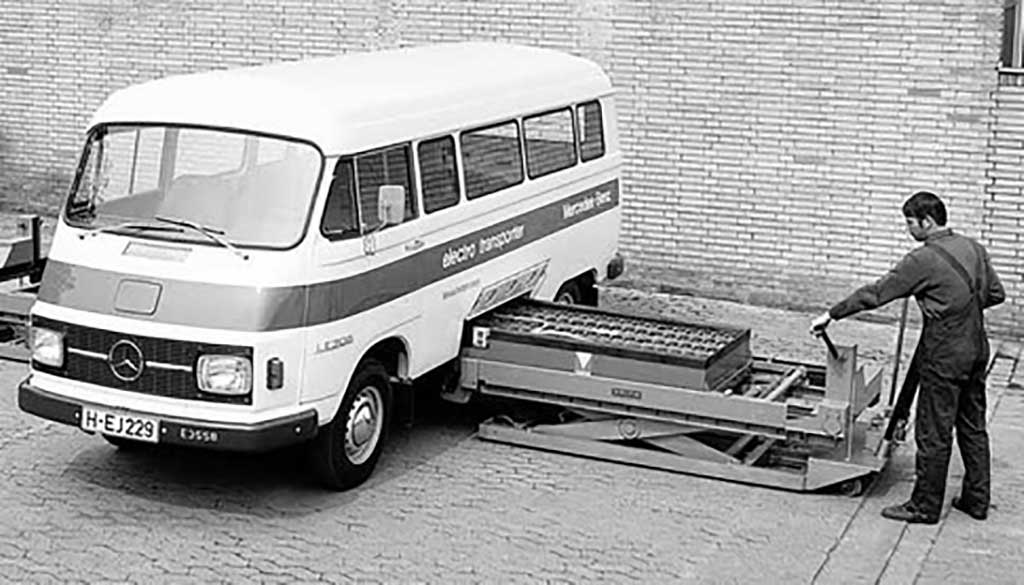SubTopics
Most vehicles sold in a world of on demand autonomous transportation will be fleet vehicles, not privately sold vehicles. That means it’s much easier to mandate standardized battery construction, installation and infrastructure, which means that now swappable batteries are much easier to implement, unlike in the case where most sales are to private consumers, who demand a myriad of options and customization which makes standardization more challenging. Depending on how fast quick charging can or cannot be optimized, it may be in the fleet provider’s financial interest to pursue standardized, swappable batteries because that way when they have to recharge a vehicle it only takes the battery pack offline for the duration of the charging time rather than the entire vehicle. Swapping a battery large enough to power a full size vehicle isn’t as easy as swapping the batteries in a flashlight, though.

It’s more like this difficult.

Swapping batteries in a full size car is an engineering burden that inherently adds significant cost and complication to any design, but even more onerously, requires a national infrastructure of swapping stations. Charging an EV’s battery also requires a national charging infrastructure, but the hardware for charging is much, much less than what is required for mechanically changing batteries. This is why many people say that in an era of thirty minute fast recharging there will never be any need for swappable battery packs. That’s a reasonable argument, and it’s especially relevant to the private consumer market. But all that being said, here are some interesting numbers to consider.
If an autonomous cab can fast charge in 30 min that equals $9.90 of income lost at the present human labor rate. If it charges 6x day that’s $59.40 lost each day. In a year that vehicle loses $21,700 of income from charging time. If a ride sharing provider like Lyft or Uber or Sidecar has a million vehicle fleet that means $21.7 Billion in lost revenue in one year across that fleet. Over the 6 year life of the entire roboUber fleet that equals $130 billion. If the vehicle has a swappable battery that can be changed in 5 minutes that means $3610 of income lost annually per vehicle. With the same million vehicle fleet that equals 3.6 billion in lost revenue. Over the 6 year life of the roboUber that equals $21.6 billion. So a swappable battery system would save a ridesharing company with a million vehicle fleet over $108 billion dollars during the six years between fleet turnover, which is a staggering amount of money.
Once vehicles have swappable battery packs (which I’m not necessarily convinced will happen, btw), now the long distance market isn’t left to gasoline vehicles anymore, because mechanically swapping a battery in the middle of a long trip won’t take any longer than gassing a combustion-engined car up does right now. We already have the national real estate infrastructure available to handle this in the form of current gas station locations.
Tesla made a well publicized effort to include the capability to mechanically swap batteries in their Model-S and that program was a failure for numerous reasons. Chief amongst the problems was that Tesla wanted the consumer to return to the swap station to reclaim their privately owned battery, which is potentially a major hassle for the consumer. Swapping batteries isn’t just mechanically challenging in a privately owned vehicle, it’s also logistically challenging. Does the company require the car’s owner to come back and reclaim their own battery? If not, the alternative is that the car company basically has to give away an eternally renewing version of the most expensive part of the electric car (the battery) in perpetuity, which is great for the consumer but not so great for the car company trying to watch their bottom line. With a fleet of commercially owned electric vehicles, the technical problems of swapping batteries are simplified (but not erased) but just as importantly, the logistical problems are almost completely eliminated. The inherent conflict between the consumers’ and manufacturers’ best interests is erased when the fleet operator owns all the vehicles, the batteries and the swapping stations en masse.
Also, a Cabin Commuter’s battery will be just a fraction of the size of a full size vehicle’s battery- probably less than a quarter of the mass. So even if fast charging never gets faster than ~30 minutes (which is unlikely it won’t improve) that means the Cabin Commuter could recharge in 7.5 minutes with equivalent hardware. A vehicle that fast charges that quickly doesn’t have any need for swappable batteries.
So the takeaway is that swappable batteries probably don’t make sense in a world of consumer owned electric vehicles, but don’t count that technology for full size vehicles out in The Mobility Cloud. But also don’t expect small Cabin Commuters to ever have swappable batteries.


